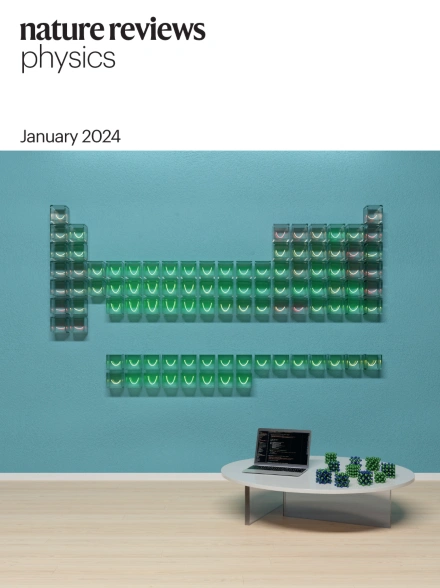Petahertz electronics
IF 44.8
1区 物理与天体物理
Q1 PHYSICS, APPLIED
引用次数: 0
Abstract
Petahertz, or lightwave, electronics uses tailored optical waveforms to control charge carriers in an electronic circuit at petahertz frequencies. This may enable faster processing than conventional pulsed electronics, which cannot be scaled beyond gigahertz frequencies. In recent years, petahertz-scale currents driven by optical fields have been measured in solid-state systems and nanoscale structures, with several proof-of-principle demonstrations of sub-optical-cycle current generation and optical-field-resolved waveform detection at the sub-femtosecond to few-femtosecond scale. Recent work has taken the first steps towards digital and quantum operation by exploring optical-field-driven logic and memory functionality. In this Review, we discuss the progress towards sub-cycle field-driven current injection, highlighting key theoretical concepts, experimental milestones, and questions remaining as we push towards realizing petahertz electronics for ultrafast optical waveform analysis, digital logic, communications, and quantum computation. Petahertz electronics uses sub-cycle currents from tailored optical waveforms for high-speed signal processing. This Review discusses progress towards the analogue age of petahertz electronics for optical waveform analysis and communication and provides an outlook toward digital petahertz electronics for classical and quantum computing.

Petahertz 电子设备
太赫兹电子学或光波电子学使用定制的光波形,以太赫兹频率控制电子电路中的电荷载流子。与传统的脉冲电子器件相比,这种电子器件的处理速度更快,因为脉冲电子器件的频率无法超过千兆赫。近年来,在固态系统和纳米级结构中已经测量到了由光场驱动的太赫兹级电流,并进行了若干次原理验证,演示了亚光周期电流的产生以及亚飞秒级到几飞秒级的光场分辨波形检测。通过探索光场驱动的逻辑和存储器功能,近期的研究工作已向数字和量子操作迈出了第一步。在这篇综述中,我们讨论了亚周期场驱动电流注入方面的进展,重点介绍了关键理论概念、实验里程碑,以及在实现用于超快光波形分析、数字逻辑、通信和量子计算的彼太赫兹电子学过程中仍然存在的问题。本综述讨论了用于光波形分析和通信的模拟时代的太赫兹电子技术的进展,并展望了用于经典和量子计算的数字太赫兹电子技术。
本文章由计算机程序翻译,如有差异,请以英文原文为准。
求助全文
约1分钟内获得全文
求助全文
来源期刊

Nature Reviews Physics
Multiple-
CiteScore
47.80
自引率
0.50%
发文量
122
期刊介绍:
Nature Reviews Physics is an online-only reviews journal, part of the Nature Reviews portfolio of journals. It publishes high-quality technical reference, review, and commentary articles in all areas of fundamental and applied physics. The journal offers a range of content types, including Reviews, Perspectives, Roadmaps, Technical Reviews, Expert Recommendations, Comments, Editorials, Research Highlights, Features, and News & Views, which cover significant advances in the field and topical issues. Nature Reviews Physics is published monthly from January 2019 and does not have external, academic editors. Instead, all editorial decisions are made by a dedicated team of full-time professional editors.
 求助内容:
求助内容: 应助结果提醒方式:
应助结果提醒方式:


